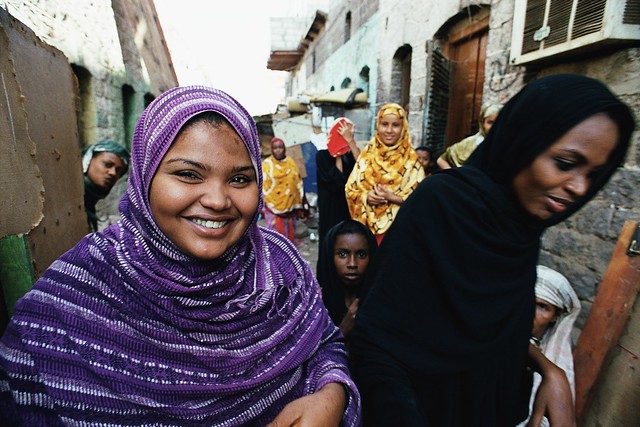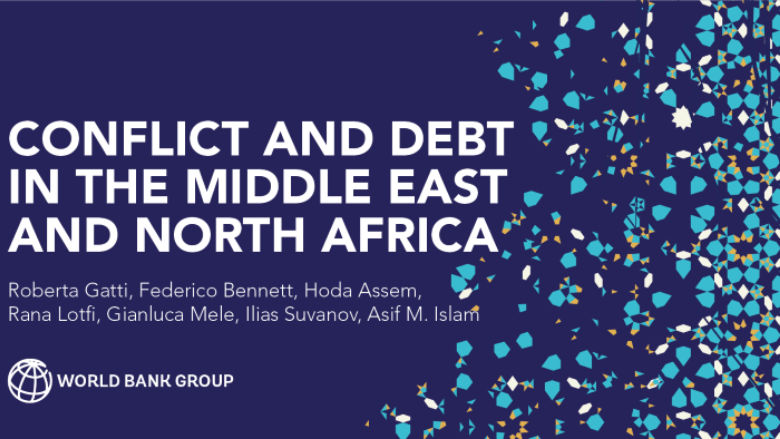Now moving into its twelfth year, the conflict in Syria has inflicted an almost unimaginable degree of devastation and loss on the Syrian people and their economy. More than half the country��s pre-conflict population (of almost 21 million) has been displaced, both internally and as refugees, mostly in neighboring countries. As a result of the destruction of physical capital, casualties, forced displacement, and the breakup of economic networks, Syria��s GDP shrank by more than a half between 2010 and 2020. The dramatic decline in Gross National Income per capita prompted the World Bank to reclassify Syria as a low-income country since 2018.
The social and economic impact of the conflict is also large��and growing. Socioeconomic conditions are deteriorating rapidly, affected by a range of shocks, including the prolonged armed conflict, economic sanctions, the COVID-19 pandemic, a severe drought, deepening economic crisis in neighboring Lebanon and Turkey and the economic consequences of the war in Ukraine. The continued depreciation of the local currency has led to rampant inflation, eroding real wages, and is pushing more people into poverty. Since the onset of the conflict, extreme poverty has consistently risen, reflecting deteriorating livelihood opportunities and a progressive depletion of household coping capacity. Access to shelter, livelihood opportunities, health, education, water, and sanitation have all worsened dramatically since the onset of the conflict. With a severely degraded healthcare system following the decade-long war, COVID-19 has only exacerbated the pre-existing vulnerability of the population. In addition, fuel prices have been raised several times in 2022, further reducing the purchasing power of vulnerable households. Since early 2022, soaring commodity prices triggered by the war in Ukraine have adversely affected Syria��s position as a net food and fuel importer. Following a record-low crop production in 2021, wheat yield in 2022 remains low due to drought conditions and shortages of agricultural inputs. Syria ranks among the ten most food insecure countries globally.
Assessing the Impact of the Syrian Crisis
Prior to the conflict, the World Bank Group provided support to Syria through its technical assistance and advisory services on private sector development, human development, social protection, and environmental sustainability. Following the onset of the conflict in 2011, all World Bank operational activity and missions to Syria were halted. Nonetheless, the World Bank monitors the impact of the conflict on the Syrian people and the economy in consultation with other members of the international community. This helps inform international thinking on Syria from an economic and social perspective and build preparedness for post-agreement recovery efforts, when and if mandated.
In 2017, the World Bank produced two reports on the impact of the Syrian conflict: (i) a Damage Assessment of Aleppo, Idlib, and Hama, and (ii) an Economic and Social Impact Analysis of the conflict in Syria, called the Toll of War. Accordingly, from 2011 to 2016, cumulative GDP losses were estimated at US$226 billion, about four times the Syrian GDP in 2010. Losses caused by the conflict��s disruption of the economy exceeded those losses caused by physical destruction by a factor of 20. The longer the conflict lasts, the more difficult recovery will be, as these losses become more persistent over time.
Analyzing the Drivers of Syrian Refugees�� Spontaneous Returns
ľ��ӰԺ��s analytical work program focuses on analyzing policy questions on the Syrian conflict. The Mobility of Displaced Syrians (February 2019) tackled the complex problem of refugee returns. With UNHCR support, the report compared the characteristics of more than 100,000 Syrians UNHCR verified to have returned spontaneously between 2015 and mid-2018, to those of millions of others who did not return in the same period. In explaining their patterns of return, the report analyzed the roles played by the individual economic, social, and demographic characteristics of these groups, as well as the conditions they faced in host countries and the conditions in the places where they were from in Syria. This involved considering both what refugees said (survey responses) and what they did (actual return decisions).
Results showed that refugees face a difficult trade-off between living in a secure area and maintaining their quality of life. For instance, when it came to the war��s impact on school-going children, the school attendance ratio of Syrian children remained higher in Syria than it did in Lebanon or Jordan, mainly because many Syrian refugees had to adopt adverse coping strategies in their countries of asylum; Syrian girls dropped out of school to get married at a younger age and Syrian boys dropped out to bring extra income for their families�� survival. For these children, human capital accumulation stops when they leave school, with persistent effects on their lifetime well-being.
Nor did improving the conditions of refugees necessarily deter their return: refugees given one more meal per day were 15% more likely to return to Syria than others without. The best results��not only in terms of return but also in regard to the welfare of refugees, their hosts, and Syrians in Syria��was achieved when diversified policy tools were used, including assistance when returning home, service restoration, and support for host communities.
Mitigating the Regional Fallout of the Syrian Conflict
In June 2020, the World Bank released a Regional Economic and Social Impact Assessment, titled The Fallout of War, which analyzed the impact of the Syrian conflict on the Mashreq region quantitatively, and identified ways in which it had been manifested. The assessment concluded that the Syrian conflict broke down bilateral and transit trade routes, destabilized the region, and led to the largest displacement crisis since the Second World War. As a result, Syria��s neighbors faced the combination of a decrease in economic activity, deterioration in labor markets, and increase in poverty that would have overwhelmed even the world��s most advanced economies.
The analysis also suggested that a number of persistent structural weaknesses in the region, including low or deteriorating institutional resilience, reduced the effectiveness of the mitigation policies put into place to deal with the impact of the Syrian crisis. Short-termism in policymaking propagated the shocks caused by the Syrian conflict, leading to costly and ineffective services, lost economic opportunities, and underfunded programs. The report advocated a fundamental shift from short-term mitigation policies to a medium-term regional strategy that would address structural problems. As countries in the Mashreq look toward recovery, policies are needed that take into account the region��s interconnectedness and seek to provide better prospects for people. An approach that addresses cross-boundary issues��including migration, trade, and infrastructure��will require local, regional, and international commitments.
In addition to producing analytical products that inform policies, the World Bank also collaborates with a wide range of partners and international financial institutions to help Syrian refugees and their regional hosts. T offers middle-income countries with large numbers of refugees favorable financing terms for development by combining grants from donors with loans from Multilateral Development Banks. To date, the World Bank has supported about US$3 billion worth of projects in Jordan and Lebanon (most on concessional terms) that directly address the impact of the Syrian refugee crisis by seeking to help both refugees and their host communities.
These projects support jobs, economic opportunities, health, education, and emergency services to shore up social resilience and local infrastructure. ľ��ӰԺ also manages the Lebanon Syria Crisis Trust Fund, established in 2014 to provide grant financing to projects mitigating the impact of the Syrian crisis in Lebanon. The Fund is financed by the Bank��s State- and Peace-Building Trust Fund, as well as the United Kingdom, France, Norway, Finland, the Netherlands, Sweden, Switzerland, and Denmark. It has supported emergency projects improving education, health, and municipal services, and social safety nets.
Last Updated: Oct 20, 2022







